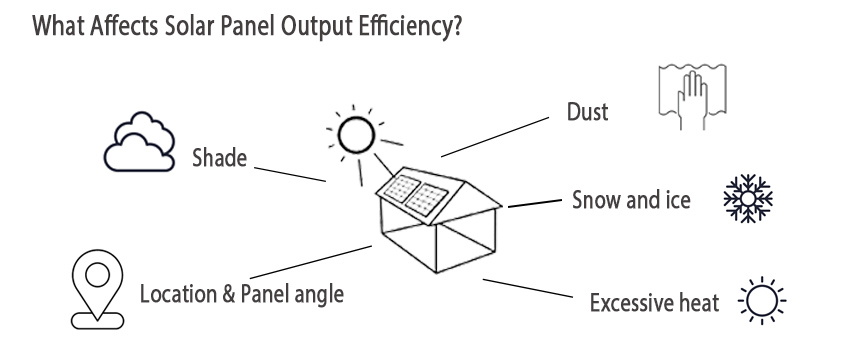What Size Solar System Do I Need In Australia?
What Size Solar System Do I Need In Australia?
More than almost every other continent, Australia is blessed with sunlight. The Global Solar Atlas shows Australia absolutely bathed in light, with more usable solar power than the entire European Union!
But how do you calculate exactly how many solar panels to buy and install? Like, is 6.6 kW of solar enough? Is a 10 kW solar system enough?
Let’s take a deep dive in the hopes of answering the question: What size solar system do I need in Australia?
In this article, we will discuss:
To start point:
- How Do I Calculate What Size Solar System I Need More Exactly?
- The Mathematical Steps To Calculating Solar System Size
- How Many Solar Panels Do I Need?
Factors To Consider Before Sizing Your Solar System
We can help you to properly size your solar array, but certain factors might change what is ‘optimal’ for your household.
- Budget is a major concern, particularly for folks who have never had a solar array in the past. The good news is that solar is more affordable than ever. In early 2023, a 200 Watt rigid monocrystalline solar panel is $270. And the larger the array that you need, the cheaper it becomes per Kilowatt of capacity. So have a budget in mind for both the solar panels themselves and the installation costs.
- Roof space or an uninhibited patch of north-facing land near your home is a major consideration when planning your solar array. Every square meter of space that you can make available means a higher potential capacity. But when space is limited, you’ll have to make due with whatever sized array will fit.
- Current and future energy use projections can really help you to plan out the optimal solar array for your particular household. We’ll go more into depth on this when we talk about calculating your solar system size.
- Peak sun hours in your particular area can influence not only the size of your solar array, but whether or not you might want to include battery storagein your solar plans. We’ll discuss how to use peak sun hour calculations when we talk about how many actual solar panels you need.
- On-grid or off-grid setup is a discussion that many solar buyers first timehave with their friends and family. Experts agree that off-grid setups are born either out of necessity or luxury. Most people will want the flexibility of on-grid solar systems, where available.

What Size Solar System Do I Need For My House?
The average small family in Australia uses between 14 and 19 kiloWatt hours (kWh) of energy every day. If you wanted to cover all of that usage, you’ll need plenty of solar panels and some form of battery storage. If you only wantto cover the most expensive energy that you currently buy from the utility company, which would be any electricity used during peak hours, you would need a much smaller solar array and little to no energy storage.
With this in mind, let’s break down these use cases into three general scenarios:
Grid-lite users only want to cover energy usage during peak hours, as a measure of environmental responsibility and cost savings.
Grid-backup users wish to cover all of their electrical usages for maximum return on investment, but will rely on grid power if they absolutely must.
Off-grid users have no connection to the power grid, either by choice or by necessity. They need to create and store all of the power that they use, either through solar or via a generator when required.
Why do these classifications matter? Imagine for a moment that you had no electrical grid whatsoever. You would need to generate between 6 and 8kW of energy per day, per person, rain or shine. Yes, that means you need enough generation and storage to power everything in case you get a full day of rain. And you need a backup plan if you have several bad sun days in a row.
That scenario is wildly different from a family hooked up to the grid, who just wants to avoid paying peak energy costs. Or a family who could potentially generate all their power, but has the grid as an emergency backup. Assuming 8 peak hours of sun in your particular location, here’s a rough size guide for planning your solar system:

For example, if you live alone and mostly want to cover your peak energy usage, you’ll want to produce most of your daily energy even on a partially cloudy day. So figure you’ll have around 5 hours of solar production even on a bad day. 5 times 1.2 kW for your solar array size will equal 6 kW/h. That should be plenty for most people! On sunny days that produce for all 8 hours of peak sun, you’ll have the option of selling back to the grid at the buy-back tariff price, which is usually around a third of the price of what the utility company charges.
Note how much more battery storage you need if you’re fully off-grid. It takes a lot of power to cover even a single rainy day, and you want to avoid using a fossil fuel generator if at all possible, given the expense involved these days.
What Size Solar Battery Do I Need?
As mentioned, in some scenarios, a solar battery is desirable. in others, it’s downright necessary.
Our solar battery storage guide will walk you through typical scenarios, and help you choose the battery setup that will best support your chosen lifestyle.
Note that even a small solar battery setup can be amazingly useful. Households that are aiming for a grid-lite setup will benefit from actually using the power that you generate rather than selling it back to the grid at just one-third of the normal cost.
How Do I Calculate What Size Solar System I Need More Exactly?
The best way to get the exact figures on your energy usage is to plug your appliances into this solar calculator. Every electronic device should have a manual or label available that lists its power consumption statistics. Use those to estimate your current energy consumption, and add any planned devices to estimate your future energy consumption.
Of course, the easier way to get a fairly good estimate of your energy usage is to look at your past few electricity bills, and track those costs across all four seasons.
The Mathematical Steps To Calculating Solar System Size
Now that you know how much energy you’ll use per day, you can calculate how well various solar system sizes will meet your needs.
You’ll want to get your average peak sun hours from this article. This will vary from region to region, based on your latitude. Remember that in more tropical climates, like Darwin, it’s possible to generate more solar in winter than in the summer. This is because the summer can bring tropical storms, while the winter tends to be fairly dry by comparison. For precise measurements, check out the Department of Meteorology website.
As mentioned prior, you’re going to want to build in a cushion for particularly bad seasons; around 20% should be fine.
Now plug those figures into this formula:

So if you use 10 kW/h a day, and your region averages 7 peak sun hours, your result would be: 10 / 7 * 0.8 = 1.14 kW of solar panels. As you can see, that’s pretty close to the 1.2 kW estimate in the table provided above. But it’s always nice to know exactly what you need, based on your particular family size and lifestyle.
How Many Solar Panels Do I Need?
To determine how many solar panels are needed for your home or your RV, you need to know 3 things:
- Your daily energy usage
- Peak sun hours in your region
- The size of solar panels you pick
You can use the formula below:

If you need to save roof space, you can check out compact 100 Watt panels, with every 10 panels representing 1 kW of generation. This article is a complete guide to If you have plenty of unshaded space, you can get half as many 200 Watt panels.
When possible, you want to use all the same types of solar panels rather than mixing sizes or types. This makes management far easier. When in doubt, go for one extra panel rather than one less.
Remember that in some cases, there are government grants and rebates available if your system meets certain standards. That might contribute to your final decision on the number of solar panels you wish to install.
The typical break-even or payback period for a solar array in Australia is between 4 and 6 years. If you researched this in the past, that might seem amazingly quick. A combination of more efficient solar panels, higher fossil fuel prices, and more advantageous government grants have led to these rapid break-even points. This is a massive boon to anyone who can afford to set up a solar array, as it will continue to serve them for years after it’s paid for itself.
What Affects Solar Panel Output Efficiency?

The number one thing that impacts solar panel output efficiency is shade. Whenever possible, you want an absolutely clear line of sight between your solar array and the northern horizon.
Next, of course, is inclement weather, which is basically temporary bouts of shade.
In particularly dusty areas or places with a lot of birds or bugs, dirty solar panels can impact their ability to absorb sunlight. But it’s rarer than many people think. Make sure you do a monthly visual inspection of the panels, and if necessary, hose them off in the evening when it isn’t too hot. If you try to hose them off during the day, you might crack the panels as you introduce a contrast between the heat of the sun and cool hose water.
Although rare in most areas of Australia, snow and ice will impede solar absorption. Simply sweep off any layers of snow, and allow the sun to melt any ice naturally.
Believe it or not, excessive heat can cause solar inefficiency. For example, a 50-degree celsius panel housing temperature can decrease energy capture efficiency by 10% to 15%. This is yet another reason we assume a 20% capture loss when estimating our solar array size.
Finally, make sure that the angle of the panel remains consistent. If for any reason the roof, ground foundation, or braces used to support the solar panel shift, you may want to recalculate the optimal angle to catch the most sunlight possible. Consult with your installer for more information.
Getting Help With Your Home Solar Battery
If you have any questions about how to calculate or plan your home’s solar array, contact Renogy for guidance. We’re happy to walk you through the calculation process, solar panel selection, solar battery evaluation, and explain all of the technical aspects of solar panel installation in Australia.
Related articles:
Choosing The Correct Mppt And Pwm Solar Charge Controller Size
Installing a Highly Efficient Solar System
Solar Power System Components And How To Optimize Them
A Comprehensive Guide On Solar Panel Size
Choosing Solar Batteries 2022: LiFePO4 Battery Vs. Lead-Acid Battery






